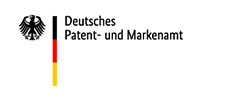The Football (Soccer Ball)
5. Footballs for special occasions
As described in the previous chapters, inventors and designers have mainly endeavoured to develop footballs that are attractive to play and to watch. Sometimes, however, other considerations have played a role too.
When it was not yet current practice to floodlight pitches at dusk, inventors developed balls which should be clearly visible even under poor ambient light conditions.
An early solution of 1931 proposed to incorporate an active battery-powered lighting device into the ball (DE-PS 583 101, DE-PS 584 431). The ball casing was composed of 13 chrome leather panels tanned in a light colour and 6 panels consisting of so-called "transparent leather". These panels were arranged on the spherical surface in such a way that light, space, pressure and weight were evenly distributed. This idea was further pursued in recent times, using new material, as shown eg. by US 6 251 035 B1. According to this application, the ball additionally emits a sound during the flight phase to catch attention.
In the 1960s it was already current practice to apply fluorescent coatings or metal foils to the ball surface. At that time it was proposed to use synthetic material alone for manufacturing footballs, and to incorporate fluorescent pigments (DE 1 860 535 U1). This made the light effect permanent for the life of the ball, whereas the earlier coatings had had a limited effect since they had been subject to abrasion.
This idea was taken up again 30 years later. US 5 741 195 A proposed, in particular, to incorporate optical brighteners, reflective metallic particles and fluorescent pigments or dyes.
Other inventions focused on further developing specific football training devices. One example is a ball casing bearing soft rubber studs, which produces erratic ball motion (DE- OS 27 05 064). Flight and rebounce are unpredictable to sharpen up reflexes and reaction of the player and to simulate ball behaviour under unusual weather and pitch conditions.
Another invention relates to a tethered ball device. The player wears a belt to which a football is attached by means of an elastic cord (DE-GM 1 946 642, Figure 13). The device is suitable for fast repetitive training exercises of shooting and receiving without involving much running.
| Publication number | Year | Title | Brief description |
|---|---|---|---|
| US 6 251 035 B1 | 1999 | Sound and light effects ball structure | see title |
| US 5 741 195 A | 1995 | High visibility inflated game ball | see title |
| DE-OS 27 05 064 | 1977 | Spielball | Ball provided with soft rubber studs for erratic motion |
| DE-GM 1 946 642 | 1966 | Vorrichtung zur drallfreien Verbindung eines Fesselballs mit einem Befestigungsorgan | Football training device where the ball is attached to the player's belt by means of an elastic cord |
| DE 1 860 535 U1 | 1962 | Sport-, insbesondere Fußball | Plastic football with fluorescent pigments in the cover |
| DE-PS 584 431 | 1931 | Sportballhülle mit Einrichtung für elektrische Beleuchtung | Football with battery-powered lighting device |
| DE-PS 583 101 | 1931 | Sportballhülle mit Einrichtung für elektrische Beleuchtung | Football with battery-powered lighting device |

